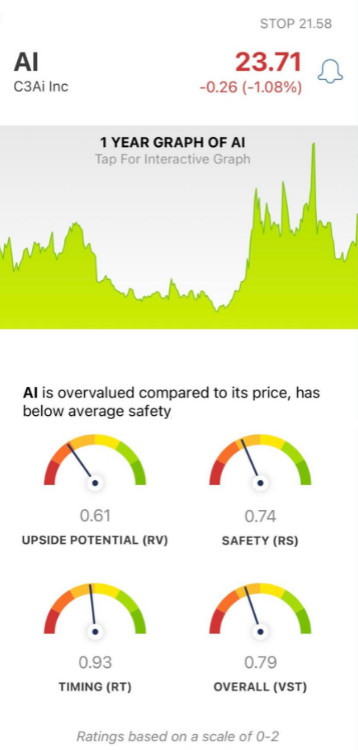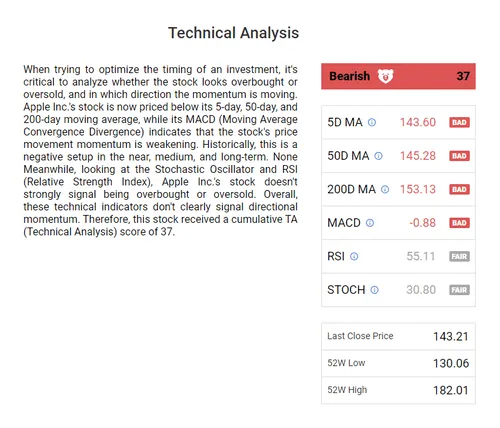20 New Ideas For Choosing AI Stock {Investing|Trading|Prediction|Analysis) Sites
20 New Ideas For Choosing AI Stock {Investing|Trading|Prediction|Analysis) Sites
Blog Article
Top 10 Tips To Assess The Integration Of Ai Platforms For Stock Prediction And Analysis And Their Compatibility
Integrity and compatibility are two of the primary elements to be considered when evaluating AI software for stock forecasting and analyzing trading platforms. Platforms that integrate seamlessly with existing tools, workflows and systems can boost efficiency and effectiveness. Here are the 10 best ways to evaluate the compatibility and integration between these platforms.
1. Check Brokerage Integration
Integration of the platform with your preferred broker or trading accounts: Check that the platform is compatible with your chosen brokerage or account.
Trade Execution: Verify whether the platform permits direct trade execution by the integrated broker.
Account synchronization - Examine to determine if your system can sync accounts' balances, transactions and positions in real-time.
2. Check the API Availability
API access: Make sure that the platform has an API (Application Programming Interface) that allows developers to develop customized tools or to automate workflows.
API documentation: Verify that the API has clear examples with usage scenarios.
Rate limits: Determine if the API has reasonable rates and can accommodate your expected use.
3. Integrating Third-Party Tools
Popular tools: Find out whether the platform is compatible with other tools such as Excel, Google Sheets, or trading bots.
Data export and import: Ensure that your platform supports easy export/import of data from and to other tools.
Extensions/Plugins: Check if the platform is compatible with plugins or extensions for additional functionality.
4. Test Compatibility Operating Systems
Desktop compatibility is crucial. Be sure that your device works with the operating system that you prefer (Windows MacOS Linux).
Mobile compatibility Check whether the platform provides an app that works with iOS or Android.
Web-based accessibility: To improve flexibility, check if the interface for your platform is accessible through an internet browser.
5. Examine Data Integration Capabilities
Data sources: Ensure the platform is able to integrate with various data sources (e.g., market data providers, news feeds sentiment on social media).
Real-time Data Feeds Examine to determine if your application offers real-time analysis.
Import historical data: Determine if the platform allows importing historical data for backtesting or for analysis.
6. Examine cloud and On-Premise compatible
Cloud-based platforms: Make sure the platform can be accessed from anywhere that has an internet connection.
On-premise Solutions: If you would rather deploy on premises, make sure the platform is compatible.
Make sure the platform is an option to mix cloud and on-premise capabilities.
7. Make sure that you have Cross-Platform Synchronization enabled.
Device synchronization: Ensure your platform syncs data and settings across devices (desktop mobile, tablet).
Verify whether changes made on one device reflect on another.
Access offline: Determine if the platform allows limited functionality or data access even when offline.
8. Assess Compatibility of Trading Strategies
Strategies for trading that are automated or algorithmic must be supported by the trading platform.
Custom indicators. Find out if the platform allows the use of scripts or technical indicators.
Backtesting strategy: Find out that your platform allows you to test trading strategies using historical data.
9. Assess Security and Compliance
Data encryption: Ensure that the platform utilizes encryption of data in the both in transit and at rest.
Validation: Determine if the platform supports secure authentication methods (e.g., two-factor authentication).
Regulation Compliance: Make sure your platform complies with relevant regulations.
10. Scalability of Tests, Performance and Efficiency
Scalability: The platform needs to be able to handle growing user numbers and data volumes.
Performance under load: Check whether the platform performs as expected under high-volatility conditions.
Resource usage: Verify that the system is using resources effectively (CPUs and memory).
Bonus Tips
Feedback from users: Use reviews from customers to assess the integration capabilities of the platform.
Free trial period: You are able to avail a demo or a no-cost trial to determine the compatibility of the platform to your existing workflows and tools.
Customer support: Make sure that the platform provides robust customer support to integrate-related issues.
If you follow these guidelines, you can effectively assess the integration and compatibility of AI trading platforms that predict or analyze stocks, ensuring they work seamlessly with your existing systems, and improve your trading efficiency. See the top rated the full details for blog advice including ai for investing, trader ai app, chart analysis ai, ai stock market, ai stock price prediction, best stock advisor, ai investment advisor, ai stock price prediction, ai investing app, trader ai app and more.
Top 10 Tips On How To Evaluate The Speed And Latency Of The Ai Stock Predicting/Analyzing Trading Platform
When you are evaluating AI trading platforms that forecast or analyze stock prices, speed and latency are crucial factors, especially for high-frequency and algorithmic traders. Even milliseconds of delay can affect the execution of trades and profit. Here are 10 top ways to measure the speed of the platform.
1. Data feeds in real-time to be evaluated
Speed of delivery of data - Ensure that the platform will deliver real-time information with a minimum delay (e.g. the sub-millisecond delay).
Check the data source's proximity to the most important exchanges.
Data compression: Determine if the platform uses efficient data compression to speed data delivery.
2. Test Trade Speed of Execution
Order processing time The amount of time that it takes the platform to process and execute trades once you have submitted an order.
Direct market access (DMA). Be sure that the platform you're using has DMA. DMA allows orders sent directly to an exchange to be processed without any intermediaries.
Check for detailed execution reporting that includes timestamps as well as confirmations of the order.
3. Check the Platform Receptivity
Speed of the user interface (UI) Find out the speed at which your user interface of the platform responds to your inputs.
Chart updates: Make sure you check whether charts and visualizations are updated in real-time and without delay.
Performance of mobile apps. If you're using a smartphone app that is running, it will perform similarly to its desktop counterpart.
4. Look for networks with low-latency infrastructure.
Server Locations: Check whether the server used by the platform is that are low-latency and located near major financial exchanges or hubs.
Co-location services: Find out if your platform offers this feature. This allows you to host trading algorithm on servers located close to the exchange.
High-speed networks: Verify that the platform utilizes fiber-optic high-speed networks or any other low-latency technology.
5. Assess backtesting and simulation speed
Find out how fast your platform can analyse and analyze historical data.
Latency in simulation Make sure that your platform can simulate trades without noticeable delay.
Parallel processing: Check that your platform supports parallel processing, or distributed computing, to speed up complex computations.
6. Assessment of API Latency
API response time The API response time is the rate at the rate at which an API platform responds to requests.
Rate limits: Check if API has acceptable rates limits to prevent delay during high-frequency trades.
WebSocket support: Check whether the platform supports WebSocket protocols to support real-time, low-latency streaming of data.
7. Test Platform Stability under Load
High-volume trading: Create high-volume trading scenarios in order to determine if the platform remains stable and responsive.
Test your platform during periods of market volatility.
Stress testing: Find out whether your platform has methods for stress testing strategies in extreme conditions.
8. Examine Connectivity and Network
Internet speed requirements. Make sure that your internet connection is speedy enough to reach the recommended speed of the platform to ensure optimal performance.
Redundant connection: Examine to determine if there are any redundant connections available.
VPN latency If you're using a VPN for connection, be sure that it doesn't cause significant delay. Also check whether the provider offers alternative options.
9. Check for Speed-Optimization Features
Pre-trade Analytics: Make sure the platform has pre-trade analytics to improve the speed of execution, order routing and many other aspects.
Smart order routing (SOR) often referred to as smart order routing is a method to determine the fastest and the most efficient execution sites.
Check the platform's tools to analyse and monitor latency in real-time.
Examine the feedback of users and benchmarks
User reviews: Conduct user studies to determine the platform's performance in terms of latency and speed.
Third-party benchmarks by third parties. You can find benchmarks from independent sources, or reviews that compare a platform's speed with other platforms.
Case studies: Check whether the platform offers testimonials or case studies highlighting the platform's low-latency capabilities.
Bonus Tips:
Use the free trial or demo period to test your platform's speed and latency in real-world conditions.
Customer Support: Make sure that the platform can offer support in latency-related problems or for optimization.
Hardware requirements: Determine if your platform requires a specific hardware requirement for optimal performance.
Utilizing these guidelines you can accurately assess the speed, latency and the accuracy of AI analysis and stock prediction systems. This allows you to select a platform according to your specific needs in trading as well as reducing any delay. Low latency is especially crucial for algorithmic and high-frequency traders, since even tiny delays can have a significant impact on profit. Have a look at the most popular https://www.inciteai.com/news for website info including trading ai bot, trading chart ai, stock ai, copyright ai trading bot, invest ai, ai hedge fund outperforms market, trading ai bot, stock analysis websites, incite, stock analysis websites and more.